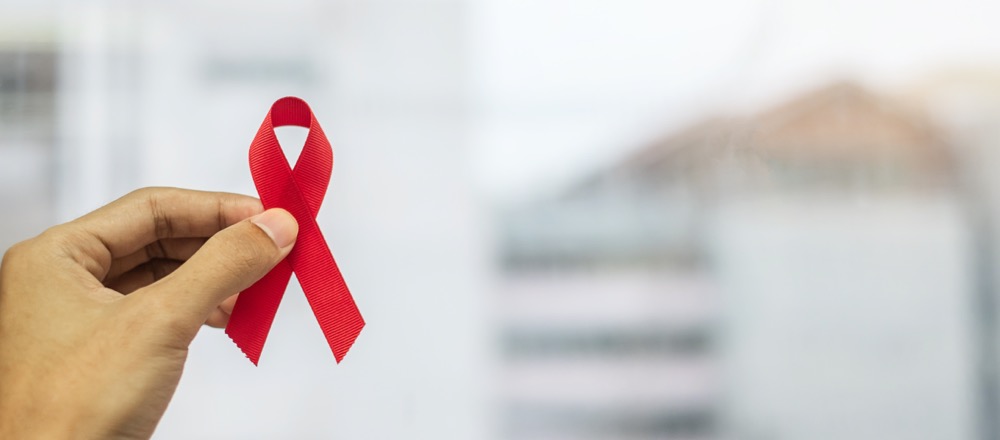World AIDS Day 2020
Every year, on December 1st, the world commemorates World AIDS Day.
On this day, countries around the globe come together to support those living with HIV and AIDS, to remember people who have been taken by the disease, and to unite in the fight against HIV and AIDS.
In 2020, the world has been focused on the COVID-19 pandemic. The novel coronavirus has inspired discussions worldwide about the shared responsibility of health: nobody is protected from a pandemic unless everybody is protected. Because of this, the theme for World Aids Day 2020 is “global solidarity, shared responsibility.”
While COVID-19 has occupied a significant portion of the global discussion this year, HIV/AIDS is a continuing epidemic. Statics show that in 2020:
- 38,000,000 people were estimated to be living with HIV and AIDS
- 1,700,000 people were newly infected with HIV
- 690,000 people died of HIV-related causes
World AIDS Day 2020 is a global day committed to educating people about the AIDS epidemic, supporting individuals living with HIV and AIDS, and remembering those we’ve lost to the disease.
Countries all over the world are coming together to mark this day and discuss education, prevention, testing, treatment, and support. This article will answer your questions about HIV/AIDS and discuss prevention and treatment.
What Is HIV?
The human immunodeficiency virus (HIV) is a virus that attacks the immune system. HIV attacks a certain kind of white blood cell, called CD4 cells. White blood cells help our bodies fight off disease and infection. When the human immunodeficiency virus destroys these cells, the body’s immune system is severely compromised.
If left untreated, HIV can become the disease AIDS. However, this does not mean that everyone who has HIV will get AIDS. Without treatment, HIV can take 10 – 12 years to progress to AIDS. Although there is no cure for HIV, many people can manage their symptoms and live long and healthy lives with treatment.
What Is AIDS?
Acquired Immune Deficiency Syndrome, referred to as AIDS, is the late stage of HIV. AIDS occurs when HIV severely damages a person’s immune system. AIDS is diagnosed when a person’s CD4 cell count drops below 200 cells/mm, or if they develop certain infections.
In the United States, most people are able to prevent HIV from progressing to AIDS with preventative treatments. Antiretroviral treatments will be started immediately after diagnosis.
Antiretroviral treatment stops HIV from reproducing within the body. This keeps the amount of HIV in the body low, protecting the CD4 cells from further damage.
However, many people currently live with AIDS. Not too long ago, being diagnosed with AIDS was an insurmountable obstacle. In 2020 there are treatment options, specialized medicine, and support groups for people whose HIV has progressed to AIDS, and medical research on treatments and cures is still ongoing.
HIV/AIDS: How is it Contracted?
HIV is spread when a person comes in contact with certain bodily fluids of an individual with HIV: blood, semen, and pre-seminal fluid.
This happens most commonly during unprotected sex or when sharing needles during intravenous drug use. Less commonly, a mother can pass it to her baby during birth.
It is not possible to contract HIV/AIDS from sweat, saliva, or any other bodily fluid. It is not possible to contract HIV/AIDS like a cold or the flu.
HIV/AIDS Infection: What are the Symptoms?
There are a few manifestations of HIV. Not every person will experience the same symptoms. HIV symptoms depend on the individual person and what phase of the illness they are in.
It’s essential to know the potential signs and symptoms of HIV infection. The sooner HIV is detected, the sooner treatment can begin. Immediate treatment increases a patient’s chances of halting the HIV progression before it becomes late-stage HIV/AIDS.
There are three main stages of HIV infection.
Stage 1: Acute HIV Infection
Following the initial infection, there are approximately 30 days of no symptoms. After 30 days, around 66% of people will experience a brief period of influenza-like illness. This is the body’s common reaction to HIV disease.
Influenza-like symptoms can include:
- Fever
- Chills
- Rash
- Night sweats
- Muscle throbbing
- Sore throat
- Weakness
- Swollen lymph hubs
- Mouth ulcers
These symptoms can last a few days to a few weeks, although some people won’t experience any initial symptoms. This is why regular testing for STIs is vital for sexually active people.
Stage 2: Clinical Latency
In this stage, HIV begins to reproduce in the body at low levels. Individuals in this stage may not experience any symptoms.
This stage is likewise called ongoing HIV infection. People in this stage may not experience any symptoms. Without HIV treatment, stage 2 will progress to stage 3. However, individuals can remain in clinical latency for up to 15 years, although some may progress more quickly.
Stage 3: AIDS
If left untreated, HIV will eventually damage the body’s immune system and advance to AIDS.
Symptoms of AIDS can include:
- Fast weight reduction
- Fever and/or night sweats
- Unexplained sluggishness
- Diarrhea that lasts more than a week
- Sores and/or red or purple blotches, especially around the mouth and genitals
- Pneumonia
- Unintended weight loss
- Memory loss, depression, other neurological disorders
When HIV/AIDS compromises the immune system, there is an increased risk of developing common infections such as tuberculosis and other opportunistic infections and tumors that are otherwise rare in people who have a normal immune function.
How Can You Tell If You Have HIV?
If you experience any of the symptoms listed after engaging in unprotected sex or intravenous drug use, it is important to immediately seek medical support. However, you can’t depend on symptoms to tell whether you have HIV. The only way to know for sure if you have HIV/AIDS is to get tested.
Some people avoid getting tested for HIV because of the stigma surrounding the virus and the fear of what a positive test result may mean for a person’s life. However, knowing your HIV status means you can treat and manage your HIV before experiencing severe symptoms.
Knowing your HIV status will protect you and any future partners you may have. If you are pregnant and concerned you could have been exposed to HIV, getting tested will protect your baby from exposure.
How to Prevent HIV/AIDS
It’s important to know how to protect yourself from contracting HIV/AIDS.
Always use condoms during oral, anal, and vaginal sex
- Engage in “low-risk” sexual activities
- If your partner has HIV/AIDS, ask your doctor if PrEP (pre-exposure prophylactics) are right for you
- If you may have been exposed to HIV/AIDS, ask your doctor if PEP (post-exposure prophylactics) is right for you
- Get STI testing regularly
Getting Tested for HIV/AIDS
If you are concerned, you are experiencing HIV/AIDS symptoms, or you have engaged in a high-risk activity, get tested as soon as possible. STI testing for sexually active people is always recommended. If you have a new sexual partner, multiple sexual partners, or engage in unprotected sex, get tested right away.
CityHealth Urgent Care offers STI testing at our San Leandro and Oakland locations.
CHUC has a fully equipped medical testing lab and on-site imaging lab, which means you can immediately receive your results. CityHealth Urgent Care will address all your medical needs and concerns efficiently, respectfully, and on-site.
If you have questions about HIV/AIDS, or you’d like to learn more about if PrEP or PEP is right for you, you can schedule an appointment or book a virtual visit. Our virtual visits allow you to speak to a medical professional confidentially and from the comfort of your own home.




